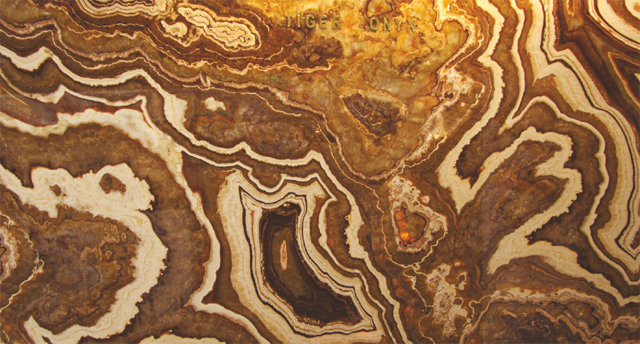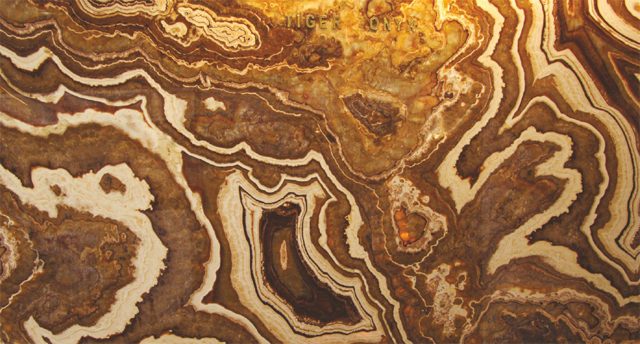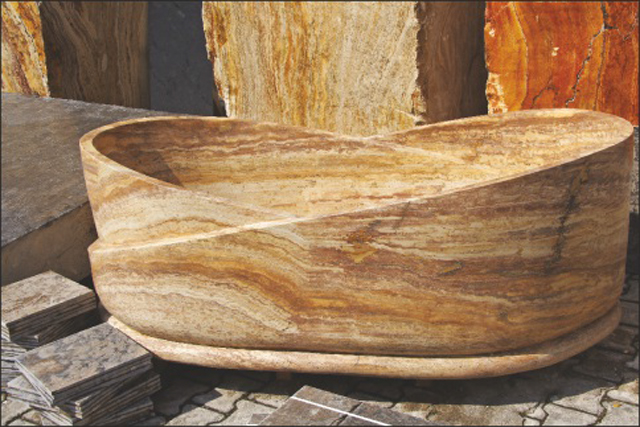STONEMASON’S TURKEY

It is common knowledge that Turkey boasts rich deposits of rock. Many Polish stonemasons regularly attend stone fairs in Istanbul and Izmir. The share of Turkish stone on the Polish market is relatively small, though. Since the Turkish stone sources and stonework are widely represented on the world market, they are worth learning about.
Turkey is a home to at least 480 types of rock, e.g. marble, travertine, onyx, sandstone, and slate. For example, there are more than 120 types of marble in Turkey. Statistical figures tell us that 40% of the world’s natural rock reserve is in Turkey. It is estimated that there are approximately 13.9 billion tons (5.2 billion cubic metres) of stone in Turkey, of which 589 million cubic metres have been identified and mapped. In Turkey rock is mostly quarried in Thrace (the European part of Turkey) and Anatolia. There are more than 1,000 quarries with over 250 types of rock in these two areas.

Many Polish stonemasons have found out that the biggest problems with importing rock from Turkey are the country’s limited processing capacity and the fact that Turkey largely exports only whole blocks of stone. However, the situation has been gradually changing over the past few years. Today there are approximately 1,500 medium-sized and 7,500 small stone processing plants in the country. In 2013 Turkey produced 12.4 million tons of stone and around 13 million square metres of slabs and tiles. As the mechanical processing gradually develops, around 80% of the quarried stone is processed directly on site.
Marble comprises 50% and travertine 45% of the Turkish stone production. The remaining 5% are various types of rock. In the past few years, the Turkish plants have been successfully implementing new quarrying and processing technologies. As a result of substantial investments in large companies, Turkey has become one of the largest producers of stone in the world.
The main Turkish marble processing region is the Afyonkarahisar Province where there are 355 plants (including 45 large plants) that process 14% of the country’s marble intended for export. Other processing plants are located around the cities of Bilecik (12%), Denizli (8%), Mugla (6%), and Eskisehir (4%). In total, 65% of the country’s marble production comes from these areas.
Turkey has been gradually increasing the export of stone, the main export material being marble (almost 50%). The largest importers of Turkish marble are USA (28%), Great Britain (7%), and Saudi Arabia (6%).
The second most exported stone is travertine that represents a quarter of the turnover on the market with the Turkish rocks. The largest importers of travertine are again USA and Great Britain, and also Canada.
In the past few years stone importers have been showing interest in granite, whose deposits are located near the cities of Ordu, Rize, Trabzon, Balikesir, Kirklareli, Bol, Kirsehir, Izmit, Canakkale, and Izmir. There is also a new market for volcanic stones (pumice, tuff), slate, and sea gravel (pebbles).
The market for marble and travertine blocks is very important for the Turkish stone industry. The largest importers are China (75% of the production) together with India, Syria, Greece, and Taiwan.
The Turkish stone has been used in the construction of many well-known buildings. Among others, it was used to create decorative and architectural details of the White House in Washington (Elazig Pink Marble), the seat of the US Congress, the French Parliament, the Google building in San Francisco, and the Olympic Village in China (Diyarbakir Marble).
Given the above-mentioned figures and information about the expansion of the Turkish processing industry, it seems that the time has come for the Turkish stone. The most popular types are: Supreme, Elazig Cherry Pink and Bilecik Pink, Aksehir Black and Karacabey Black, Milas Kavaklıdere, Aeagan Bordeaux, Manyas White Marble, Afyon White and Marmara White, Afyon Tigerskin and Afyon Sugar, Bilecik Beige and Golpazarı Beige, Burdur Brown, Denizli Travertine, Ege Bordo, Milas Leylak, Chocolate Travertine Kutahya, diabase: Gemlik, and granite: Thracian and Ayvalik. Perhaps it might be a good idea to learn more about these types of Turkish stone and expand your offer.

Source:: Kurier kamieniarski
Author: Dariusz Wawrzynkiewicz | Published: 27.4.2015
